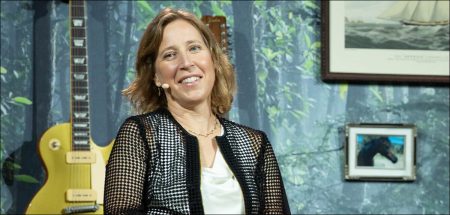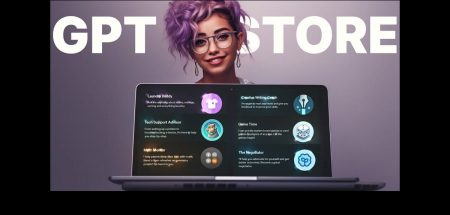Science and technology has always been seen as a ‘guy thing’ but that conception must give way to a gender neutral one if we hope to go beyond its current expression. Uma Iyer explores…
Let’s start by closing our eyes and visualise 5 famous men, 5 famous women and at least one of them who identify themselves are nonbinary/trans/gender-fluid working in technology? If your answer is 5/5 men, while 2/3 women and none in others, then read on!
Decades of work has gone in bringing about equality in workplace, however, gender equality seems far away when it comes to technology. Girls despite doing consistently superior in school, refrain from taking technology as a subject in the universities because of the perception technology holds.
Just 23 per cent of the people working in STEM (Science, Technology, Engineering and Mathematics) roles across the United Kingdom (UK) are female – and only 5 per cent of leadership positions in the technology industry are held by women. Despite possessing about 40 per cent of spending power, substantial decision-making and buying power, only 2 per cent of venture funding is given to women-led companies. One of the major barriers is the saturation of men making decisions in the technology space. Women tend to prefer work that makes a wider impact and reach, while in studies men have looked forward to more ‘interesting’ work.
What is more, the imbalance does not appear likely to be redressed any time soon; the UK’s future pipeline of technology talent is also heavily skewed towards men, with women accounting for just 15.8 per cent of the UK’s current generation of engineering and technology undergraduates. This lack of a strong tech talent pipeline is starting to impact organisations.
Global CEO Survey reveals that two thirds of UK CEOs say recruiting people with digital skills is difficult, compared with only 43 per cent of CEOs in the US and just 24 per cent in China. CEOs say that STEM skills are also harder to recruit in the UK than elsewhere.
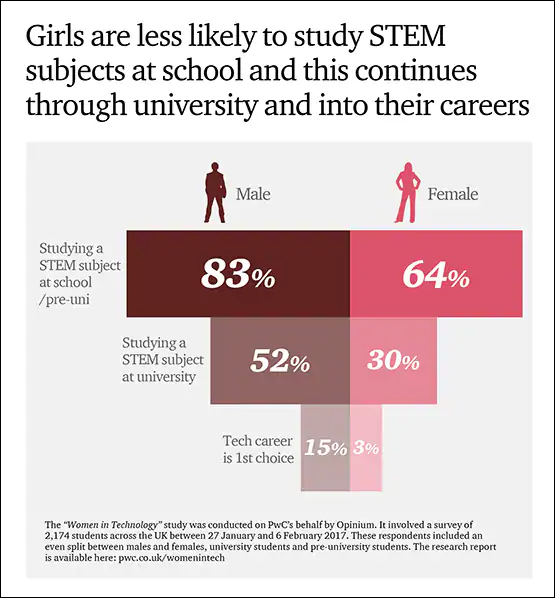
Indian Space Research Organization (ISRO) has set a benchmark in diversity and inclusion. The organization’s most high-profile programs, including India’s first Mars Orbiter Mission, Mangalyaan in 2013, followed by Chandrayan II in 2019, had women in critical roles. This means that if there is a concerted approach from grassroots and appropriate support is given, there are avenues to ensure that diversity is built and sustained.
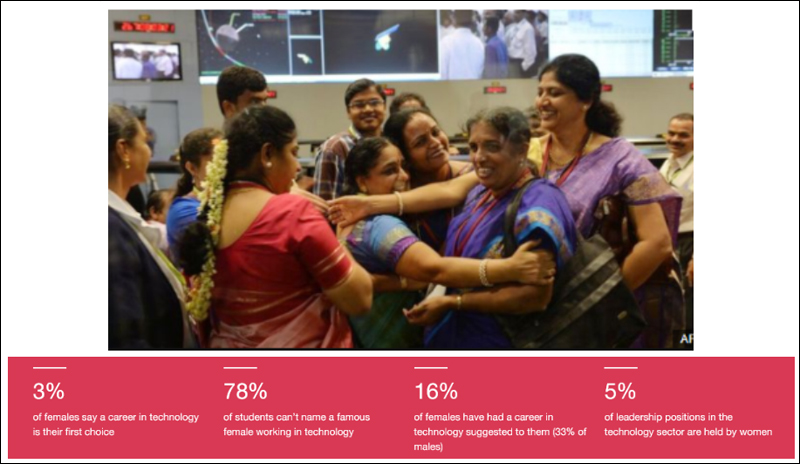
Source: pwc.co.uk
IT and digital products
Of the top health trackers – Apple, Fitbit, Nike - not one had a period tracker at release, even though half of the target customer base tracks periods as part of their normal health routine, and health trackers are primarily used by women!
The digital products developed are a stark view of the male dominance in the development space. The targeting and the sustainability of the products is missing due to the lack of diversity in the product creation space.
It is proven that having a diverse team enables creation of innovative customer journeys created in the retail sector and even in NHS where new patient experiences are being developed. Women in NHS are more involved about 77 per cent more than men. In US women make 805 of the buying decisions hence are better placed to design the customer journeys. Females are better positioned to meet healthcare needs of citizens and customers. This also extends to users who do not identify themselves as non-binary genders who are a specific user group that is ignored.
Having a more equitable gender balance makes sense for better business and creates a wide range of benefits that mirrors the wider society. Women in general are especially strong in skills such as problem-solving and emotional intelligence.
“To create digital products that satisfy needs, it is essential to consult users at all design stages. This consultation ensures that a product is relevant to their lives and realities. It includes user testing of a product to validate design decisions, identify pain points, and uncover user experience issues. User testing can and should be done in multiple rounds, both remote and in-person, and at different stages of product development.”
Testing normally is done with ‘default’ users who are typically male. The teams designing and developing digital products require to work for both women, girls, non-binary and male users.
With ‘default’ users, who are male, adolescent girls and young women are often left out of design and user testing, and user testing teams often do not fully consider all users’ needs and realities. For example, restrictions on mobility, cultural traditions, consent, and venue selection can make it harder or impossible for female users to engage with product design and testing teams.
Intentional efforts are needed to include young users in design and product testing, so they attend consultations, feel comfortable and safe, and share true views and experiences. Consultations with adolescent girls and young women helps to create digital products that cater to female users’ journeys.
From the board room to studio sets and Capitol Hill, Angelica Ross is a prominent voice in the fight for trans and racial equality. She is the President of Miss Ross, Inc. and founder of TransTech Social Enterprises, a program helping individuals lift themselves out of poverty through technical training and digital social impact work.
After the 2008 monetary crisis, entrepreneur Anne Boden saw banks continue operating the way they always had. But she believed banking needed to adapt and modernize to thrive – so she founded Starling Bank.
A ground breaker in fintech, Starling is a mobile-only bank: its services can be accessed via an app only, with no high street branches in sight.
Founded in 2012 by Falguni Nayyar, Nykaa became the first women-led company to list on National Stock Exchange. It is also the first women-founded startup to turn unicorn in 2020. The e-commerce brand which specifically caters to women’s beauty and lifestyle retail products made its market debut in November 2021, with the company’s IPO valuation at Rs 95,437 crore.
IT and the journey to Gender Neutrality
While the journey has begun, it is a long road ahead. Of a study conducted 66 per cent of respondents were able to name famous men working in technology but only 22 per cent were able to name females. It is viewed that there are few female role models in technology.
STEM graduates have become a vital cog in the wheel of global prosperity and unsurprisingly, China is leading the way. The World Economic Forum reported that China had 4.7 million recent STEM graduates in 2016. India, another academic powerhouse, had 2.6 million new STEM graduates last year while the U.S. had 568,000.
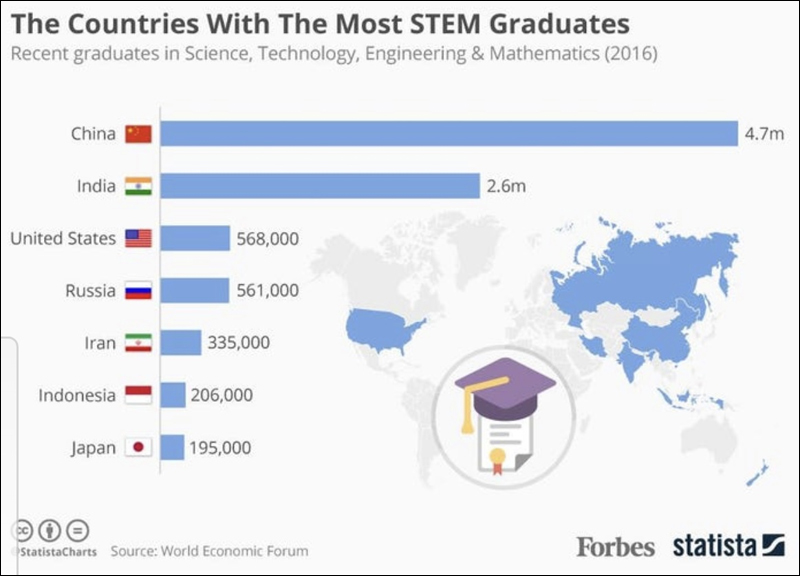
There is a clear gap of female role models who have been successful in technology that girls and women can emulate. Some of the key aspects of the journey are documented in the UNICEF working model identified below which has been successful.
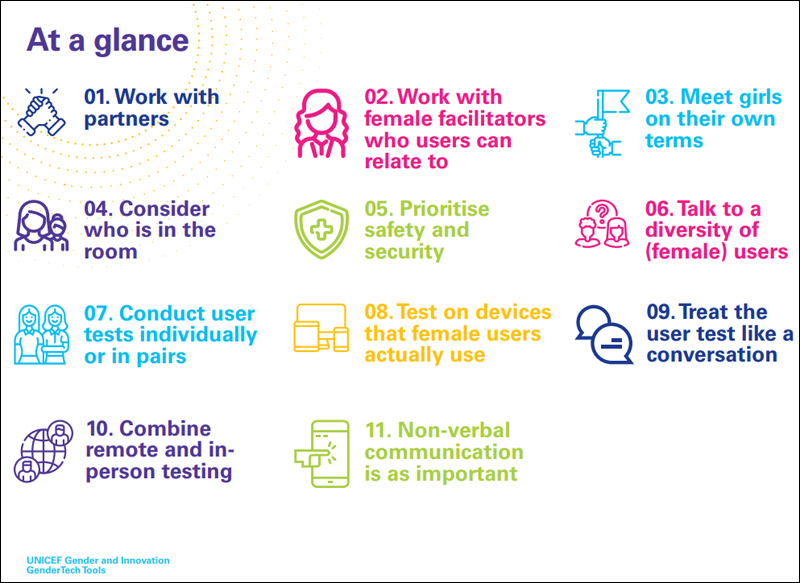
“In real life, as in fiction, the expanding range of lifestyle choices available now and in the future will not simply lead to increased tolerance of difference. Although transgender and transhuman issues are becoming increasingly visible, new forms of discrimination will arise as people move further away from ‘traditional’ modes of living. But if the end-goal of transhumanism is to leave our biological origins entirely behind us, then a posthuman world would also be a post-gender world. In which case, so much of the discrimination that focuses on the body would become extinct.”
The implications for women massive from an innovation and technology leadership perspective. In this new era, women by virtue of their daily experiences are a walking-talking hub of a multi-billion-dollar business idea.
While it has been ‘uncool’ to don the ‘femininity’ in the workplace from menstruation to motherhood, the economy now is female driven which will harness the experiences lived by the gender, is now a walking hub of lucrative business idea.
Let us hope that every experience and every pain-point experienced by the minority and the genders help build a business idea that never occurred to a Mark, Steve, or Bill!
In case you missed:
- None Found









